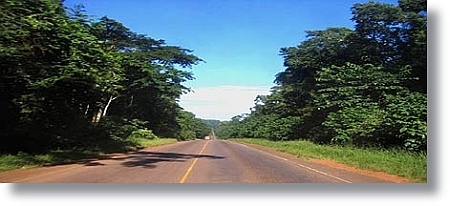Uganda Water Crisis Still Looms

 |
| Mabira Forest : Scenic grandeur & water catchment |
If you have cared to observe the course of events in your village over a ten year period, you notice that those rivers with fresh water where you took your swimming lessons are no more. What is left in some instances are small traces of flowing water surrounded by eucalyptus trees, food crop gardens, waning riparian wetlands or small towns. The early morning fog is history. Rainy seasons can longer be traditionally predicted! When such rains come, they cause devastating floods, displacement and disease outbreak.
What exactly happened? Are these symptoms of climate change and subsequent global warming? Unabated encroachment? Irresponsible land use? A curse? Saharization? Impunity? Inefficient policy regimes and deficiency in Implementation monitoring and evaluation of existing evironmental policies?
 |
| Ugandans protest the attempted destruction of Mabira P.Courtesy |
The drying up and depletion of R. Rwizi in Mbarara, R. Nyamwamba in Kasese, L. Kyoga and L. Victoria are glaring manifestations of a severe environmental breakdown, weak policy regimes and subsequent economic mayhem, poverty, conflicts, disease, drought and famine. ACODE findings corroborate with the Uganda Poverty Status Report (2005), which reveals that Uganda’s forest cover has diminished from over 11m hectares in 1890 to the below par 3m hectares in 2005! At this geometric rate, in few years ahead, Uganda will have no forests and water. In the circumstances, public water works like boreholes and protected springs have started drying up.
Environmental conservation is no longer a question of beauty but economic survival of both individual households and the nation at large. Environmental degradation as evidenced by drained swamps, eroded top soils, drying rivers, shrinking lakes, low water table and subsequent desertification is a reality. This has reduced and depleted water yields to feed public water works like gravity water schemes, boreholes, shallow wells, and protected springs. In Katakwi, Mbarara, Ntungamo and Kasese, over 50% of public water works are nonfunctional! Water granaries that feed them dried up!
How much money did Uganda spend to put these public water works? Will Uganda achieve the ambitious 77% water coverage target as laid down in the PEAP by 2015 at a time when all its wet lands, forests, rivers, hills, lakes are rapidly getting depleted?
If Uganda is to insulate itself from this calamity it has to deliberately replenish and restore its water catchments. This is why the proposed give-away of Mabira is intriguing. Mabira is no longer just a scenic beauty for ecotourism; it is important for survival of humanity. If we don’t have water, then we don’t have life. The debate and contestation over Mabira's incarnation to a sugarcane plantation should not arise. It is simply a taboo.
Pre-independent Uganda was the most ideal in the whole of Africa. It was described as the ‘Pearl of Africa’ and a fairy tale by Sir Winston Churchill. The country's ideal weather pattern suitable for agricultural production that boosted the economy in the immediate period after independence. Agriculture, thus, formed the country’s economic backbone until today. Increases in population, now at over 26 million people, have had very negative implications on land usage, mainly for agricultural and shelter purposes.
Despite the country's numerous laws and policies geared at conserving and protecting her environment (such as the Poverty Eradication Action Plan (PEAP) and the National Environment Management Act (NEMA among others) catchments continue to dwindle! This calls for meticulous review and avid implementation of the existing environmental policy regime with the view of tailoring, customizing, localizing and genderizing it for practical purposes.
My friend Godber Tumushabe of ACODE argues that if the top leadership (read President Museveni) demonstrates the will for uncompromising implementation of environmental policies, this deepening water crisis can be averted. However, the President argues that he wants to create jobs for the citizenry and boost Uganda’s economy. Can this be achieved sustainably? Can Ugandans be guided to engage in profitable ventures that don’t compromise the wider environmental needs? ACODE, a body of policy gurus should provide guidance and answer the seemingly legitimate concerns of the President.
You either environmentalize or perish. Over to you fellow Ugandans.
By Rwakakamba Morrison.
Rwakakamba is Secretary General, Uganda National Chamber of Commerce and Industry. He can be reached at [email protected], [email protected]
